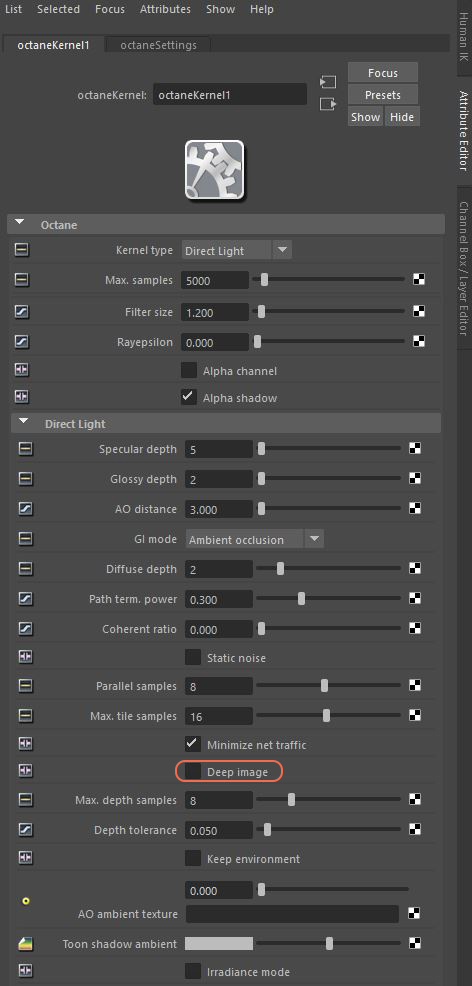
Deep image rendering stores the Z-depth location of an object with samples of a rendered image. It works best in scenarios where traditional compositing techniques fail, such as compositions where masking out overlapping objects is too difficult, or scenes that render images images using depth-of-field or motion blur, or compositing footage in rendered volumes. Instead of having single rGBA values for a pixel, a deep image stores multiple rGBA channel values per pixel together with a front and back Z-depth (Z and ZBack channels, respectively). This tuple (R, G, B, A, Z, ZBack) is called a deep sample.
Most major compositing applications now support deep image compositing. The disadvantage of deep image rendering is the large amounts of memory required to render and store deep images. The standard output format is OpenEXR.
Deep image rendering is enabled from the Kernel settings in the Attribute Editor window by checking the Deep ImageRenders frames with multiple depth samples in addition to typical color and opacity channels. checkbox. Deep Image Rendering works with the Path Tracing and Direct Lighting kernels.

Figure 1: The Deep Image checkbox in the Kernel Settings tab of the Attribute Editor window
For a typical scene, the GPUThe GPU is responsible for displaying graphical elements on a computer display. The GPU plays a key role in the Octane rendering process as the CUDA cores are utilized during the rendering process. renders thousands of samples per pixel, but VRAM is limited, so you mustmanage the number of stored samples. Two parameters are provided for this purpose: